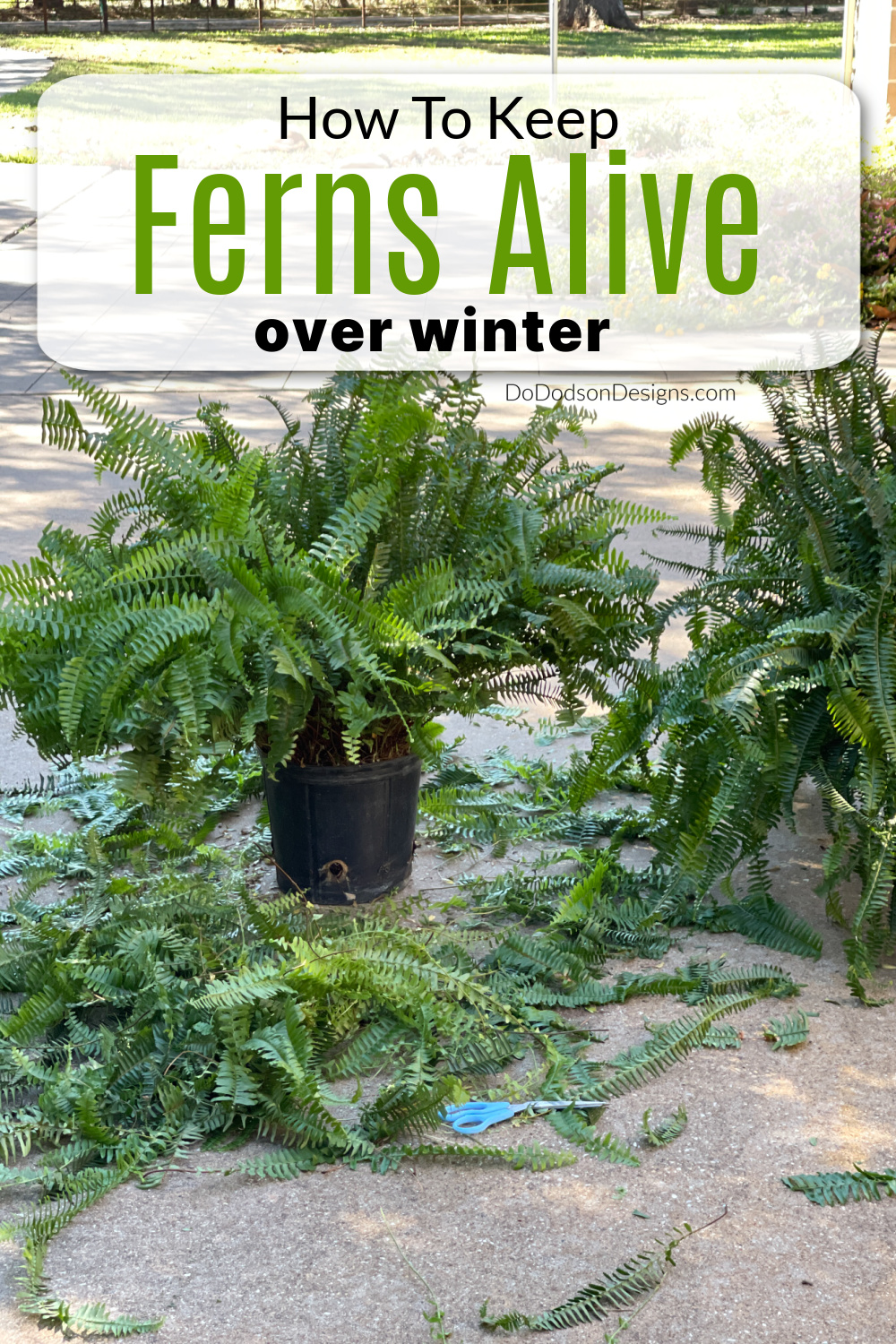
Hey, plant-loving friends! Are you a proud owner of ferns and don’t know what to do with them before winter? I was, too, until a few years ago. Knowing how to care for your ferns and keep them alive is important as the winter approaches. In this blog post, I’ll explain the techniques I use to ensure the survival of my ferns during the Winter.
* As an Amazon Associate, I earn from qualifying purchases and through other companies as well. You will not be charged extra when you purchase through these affiliate links, but any income I make helps me create more amazing DIY projects to share with you! To see my full disclaimer, click here!
How To Keep Ferns Alive In Winter
If you’re like me, you’re probably here because you’re searching for answers in hopes that you can save your precious fern from the winter kill. I learned the hard way.
While these semi-tropicals can be grown year-round, “they say,” in hardiness zone (USDA) 8b-11, our home doesn’t fall in those zones. We are in 8a. But honestly, you can’t always use this guide if you live in Texas. We have crazy weather here, and it’s unpredictable at times. Call me crazy, but I still love Texas.
Two years ago, we moved back to the country to a charming ranch-style home with a porch to die for. It was begging for some evergreen ferns. So, that’s where my fern-loving journey began and my experience with these amazing shade-loving plants.
Purchasing new ferns with hanging baskets every Spring has been an ongoing thing with me for years. That is until I learned how to keep them alive during the Winter.
Today, I’m sharing what works for me so you can learn, save money, and enjoy those beautiful ferns for the years to come.
So, grab your gardening gloves, and let’s dig into the world of fern care. I’ve heard it will be a cold winter here in Texas. Yeah, I know. I’m a crybaby when it comes to cold weather.
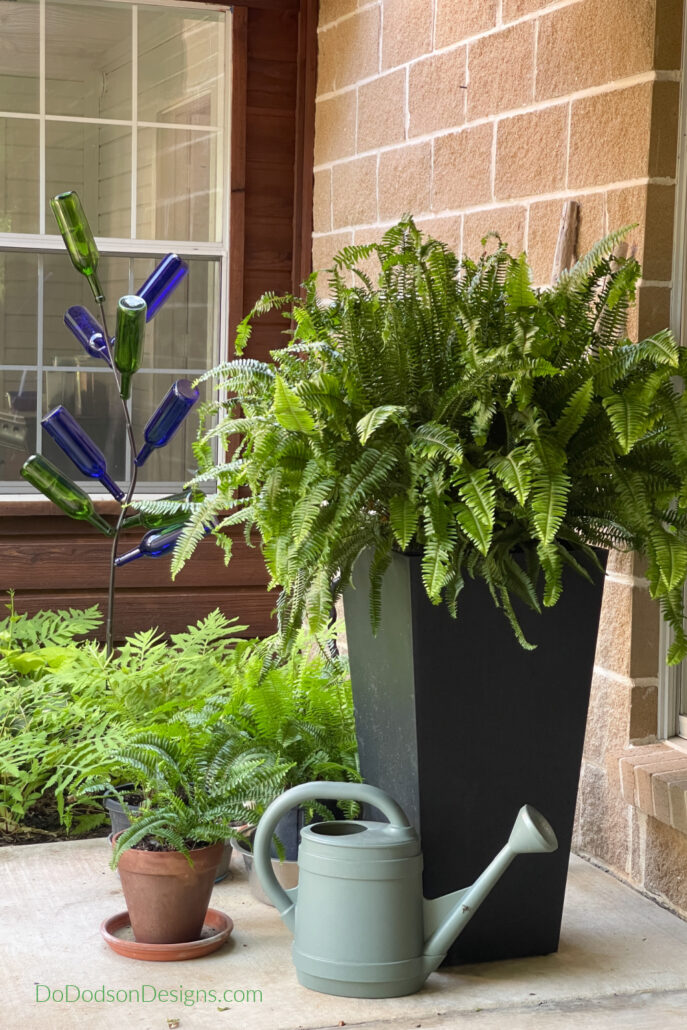
Related Topics:
Bring Your Boston Ferns Indoors To Overwinter
Boston ferns are usually tolerant of cooler temps but can sustain significant damage from an early frost. Don’t make the mistake of leaving your fern on the porch or patio this Fall as it gets nearer to the first frost.
Freezing temps can not only damage the fronds but can also stunt and or damage the root system. Not to mention a hard freeze! If this dastardly thing happens to your fern, say bye-bye and purchase a new one next year.
Hopefully, this won’t happen if you give your tropical plant the care and love it needs to thrive.
Boston ferns do not like the cold, so overwintering is the only solution. Be sure to bring them in well before the first frost.
Pruning Your Boston Fern Before Winter
Ferns are quick growers in the right environment; they can easily double in size during the growing season and even outgrow their container. The roots will begin to grow out of the drain holes because the plant is root-bound, and the roots have nowhere else to go.
Below’s an example of one of my ferns that needs to be divided.

If your plant is large, give it a good trimming. Don’t be afraid to cut back several inches to make them more manageable inside. I also like to trim the underside to remove all the dead and brown fronds. This will not harm the fern. This will help to keep your fern alive inside during the winter months with less foliage to worry about.

Now is also an excellent time to inspect for pests and give the whole plant a good bath with a water hose and spray nozzle. This will help wash away those pests and the eggs they leave behind. Once the plant has dried, it’s ready to be moved indoors.
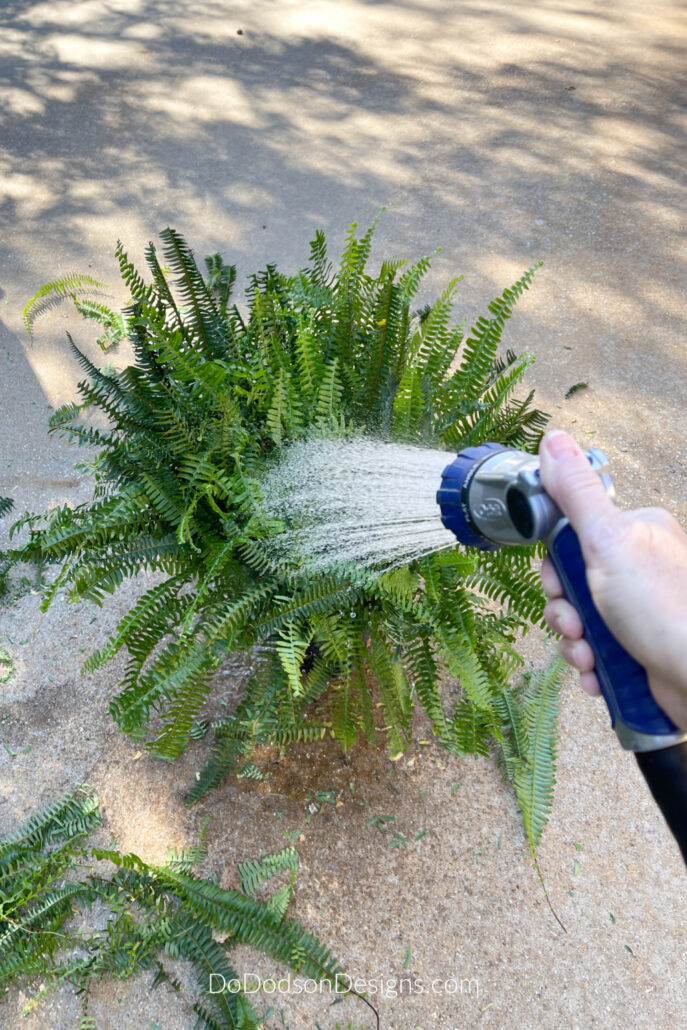
Come next Spring, you can trim them down even more, especially if you overwinter them in a garage. That’s a whole other subject.
No worries! I promise if you give it the care it needs through the Winter, it will come back.
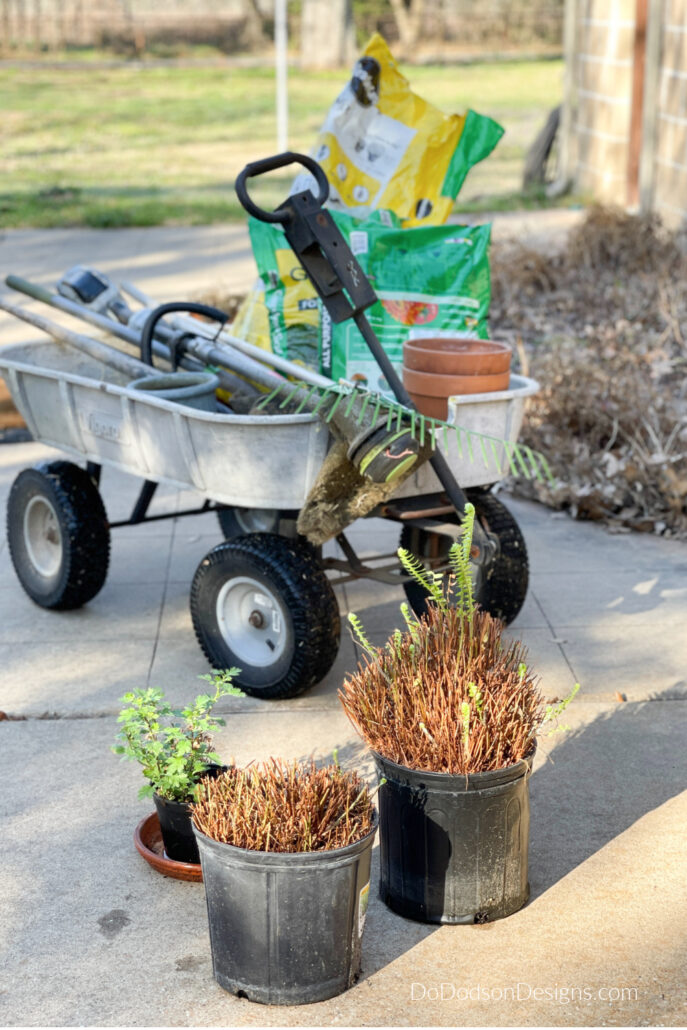
Separate/Divide Every Two Years As Needed
If your fern has simply outgrown its container (roots and fronds growing from the bottom), they have become root-bound and will no longer be beautiful and full. You’ll need to divide the fern in half or thirds in the Spring and relocate the divided ferns to new pots with fresh soil. Use a container about 1 inch bigger than the root ball.
Later in the year, you’ll have beautiful ferns again. I’ve divided mine for several years now with great success. It’s always fun to watch the new growth in the Spring.
These ferns were divided last Spring from one large fern into three separate containers. They will continue to grow and get even larger next year, and then I can divide them again. More FREE ferns!

Providing the Ideal Temperature
Maintaining the ideal temperature is so important when it comes to keeping your ferns alive in Winter. Ferns are naturally adapted to thrive in cool, moist environments, making temperature management an important factor in their overall health during the colder months. Creating a climate that mimics their preferred conditions is important to ensure your ferns stay alive and vibrant.
First and foremost, keeping your ferns away from extreme temperature fluctuations inside is essential. Sudden drops or spikes in temperature can shock your plants and cause irreparable damage. Aim to keep the temperature at 60-75 degrees Fahrenheit (15-24°C) during the day and slightly cooler at night.
If you have the luxury of a greenhouse or sunroom, these spaces can offer the perfect environment for your ferns. Their glass walls provide natural insulation, trapping and releasing heat during the day at night. Just be sure to monitor the temperature consistently to avoid any potential overheating.
However, if you don’t have access to a greenhouse or sunroom, you can still provide the ideal temperature for your ferns by strategically placing them in your home. Look for areas that receive indirect sunlight and maintain a stable temperature. Rooms with consistent heating and cooling systems, such as living rooms or bedrooms, are often suitable.
Understanding Moisture and Humidity Requirements
During the cold months, it’s easy for indoor environments to become excessively dry, as central heating systems tend to pull the moisture from the air. To counteract this, you can increase humidity levels around your ferns by using a humidifier or placing a water tray near them. This will help create a more favorable microclimate for your plants.
Remember, each type of fern has its specific temperature preferences, so it’s important to research the needs of your particular species. Providing them with the ideal temperature conditions will set the stage for their success and beauty throughout the Winter.
The Boston fern will go dormant and require less water throughout the winter. Once a week is typical, and you can incorporate that into your watering schedule.
Remember to research or consult with a plant expert to determine the moisture needs of your particular fern.
Should I fertilize during the Winter Months?
Because ferns are tropical, they need warmth and the right environment to grow. Because they typically won’t grow during the colder months, fertilizer isn’t needed when you overwinter inside.
But do use a slow-release fertilizer during the growing season with a good watering schedule.
Adequate Lighting for Ferns
Adequate lighting is necessary for keeping your ferns healthy and alive throughout the winter. While ferns are typically shade-loving plants, they still require some level of light to thrive. Without enough light, ferns may become weak and leggy, and their growth may be stunted.
During the winter months, when natural light is limited, providing supplemental light for your ferns can help. Place them in a well-lit area of your home, such as near a south-facing window where they can receive bright, indirect sunlight but away from direct sunlight. If your home doesn’t have a suitable southern facing window, you can use artificial grow lights to ensure your ferns get the needed light.
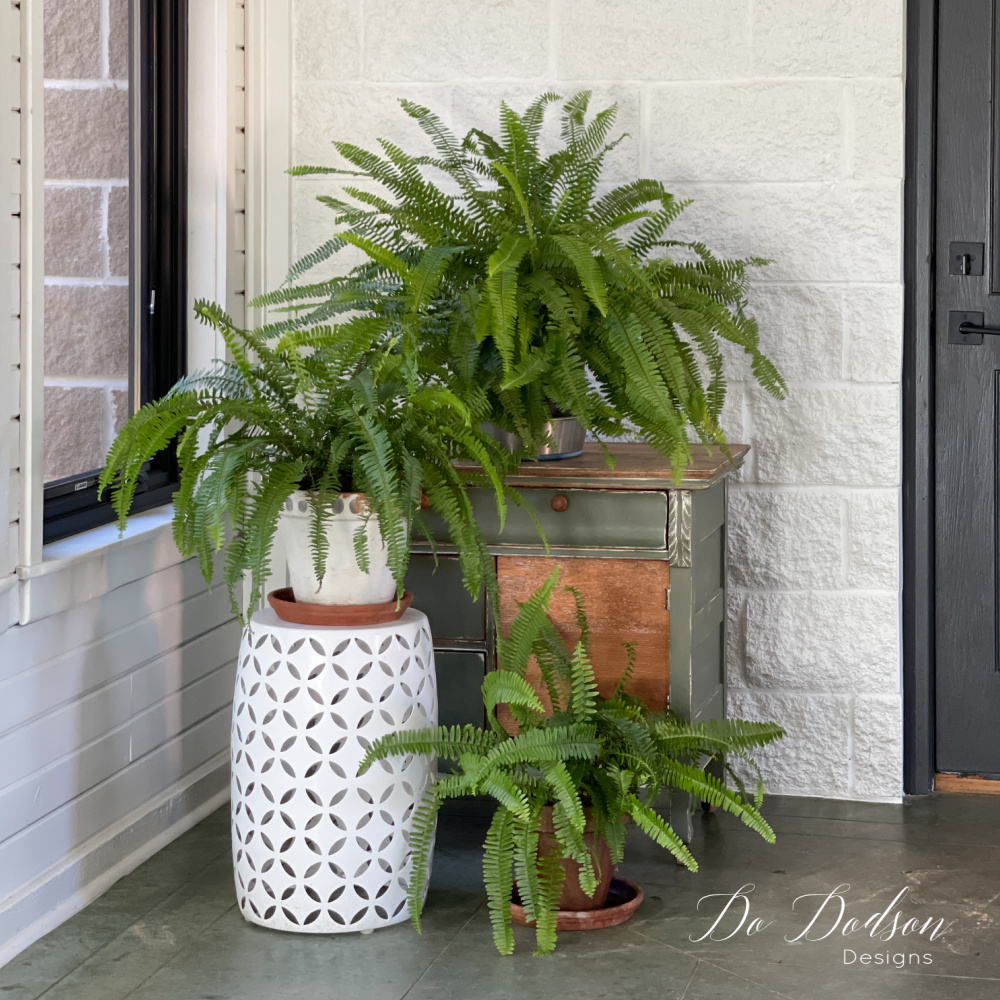
When using artificial lighting, it’s important to position the lights at the right distance from your ferns. Hanging the lights too close can result in burning the leaves, while placing them too far away may not provide enough light for optimal growth. Follow the manufacturer’s instructions for your specific lighting system, or consult a plant expert.
In addition to the right amount of light, it’s also important to consider the duration of light exposure. Like in nature, ferns benefit from a consistent day and night cycle. Try to provide your ferns with 12-16 hours of light during the day while allowing them to rest in darkness for the remaining hours.
Shielding Your Ferns from Drafts
Drafts can come from various sources, such as windows, doors, and even ventilation systems. While fresh air is essential for your home, it’s essential to strike a balance and ensure that your ferns aren’t directly in the path of chilly air currents. Even a slight drop in temperature can shock the ferns and affect their growth and vitality.
To shield your ferns from drafts, look around where they are located. Are there any windows or doors close by that tend to let in cold air? If so, consider rearranging them to a more protected spot away from drafty areas, making a more stable temperature and protecting them from sudden temperature fluctuations.
Furthermore, adding a layer of insulation around your ferns can provide an extra shield against drafts. One simple way to achieve this is by placing a decorative screen or barrier nearby to create a barrier between your ferns and the drafty area. This physical barrier will help redirect the airflow and protect your ferns from the chilly effects of drafts.
You can also use supplemental heating to keep the temperature around your ferns consistent. Consider using a small heat lamp near your ferns to maintain a stable and comfortable environment. However, be cautious not to place the heating source too close to the plants, which can cause damage or even scorch the foliage.
With a little planning, you can save them from year to year. However, I DO have plans to build a greenhouse to help with my recent population explosion of ferns, but until then, I’ll keep bringing them indoors.
I hope this article has helped answer any questions that you may have had about how to keep Boston ferns alive in winter. Please don’t hesitate to ask questions you have or about things I may not have covered here. I’m still learning myself.
Until the next project… xo, Do

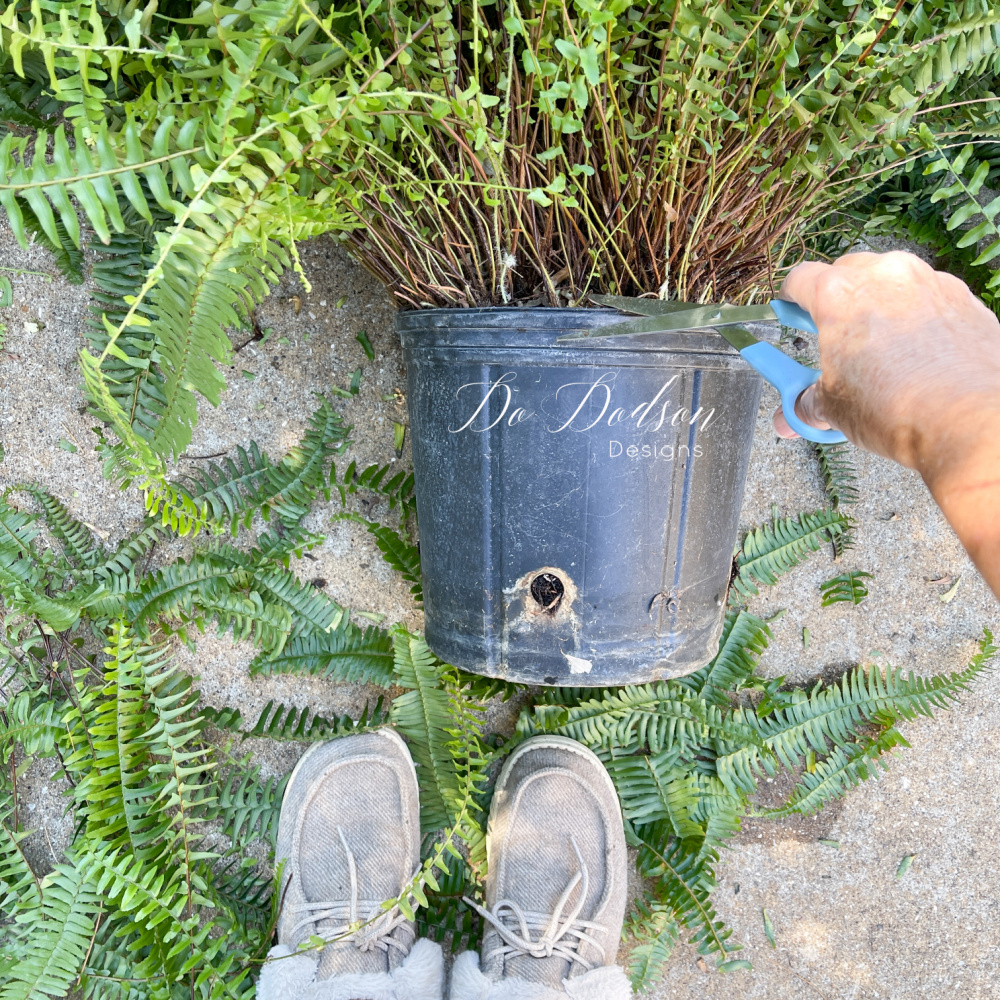


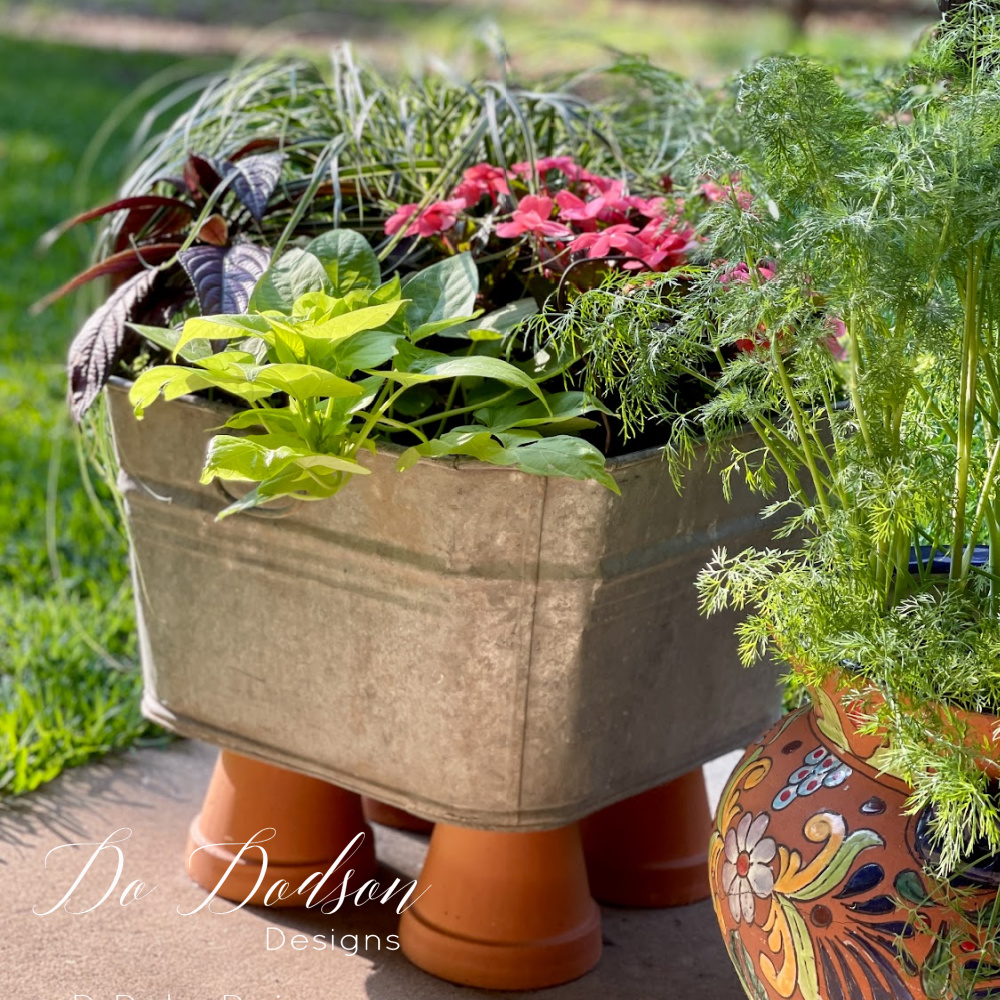
Very good article. I’m not real good with ferns and you provide some great pointers. Thanks. P.S. Are those empty beer bottles making up the fake tree
You’re welcome, Bev. 🙂 I love my bottle tree. I purchased the bottles from Amazon. I think they’re wine bottles.
Thank you! I bought 2 Boston ferns for my brother’s funeral in May. They did very well in a shade garden all summer. I brought them in (heavy!!) for winter to try to keep them going for sentimental reasons. Depending on these tips to get them through winter. 💗 I’m not a green thumb to begin with but with your advice I’m hopeful.
Hi Teri,
I’m so sorry about your loss. 🙁
I have several plants that I saved from my loved ones memorials. I hope you can save those beautiful ferns. It was worth the effort for me. Gave a good week and thanks for reading. 🙂